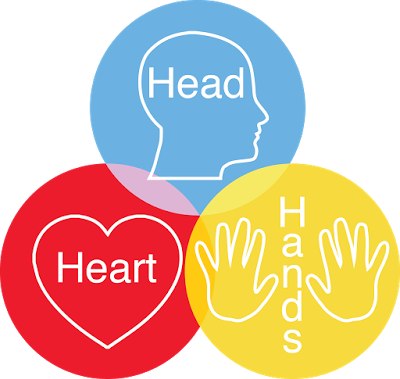
“We were so scared of our IPO”: Leaders Unplugged with former On-CEO Marc Maurer
Marc Maurer shares how ON grew from startup to IPO by defying hype, focusing on purpose, and leading with humility in this candid Leaders Unplugged episode....

by Alyson Meister Published March 9, 2023 in Leadership • 7 min read
The statistics make for grim reading. The World Health Organization (WHO) reports that instances of depression and anxiety have increased by 25% in the past few years; suicide is now the second-leading cause of death among 15-to-29-year-olds in the US; and, already prior to COVID-19, nearly half of all chronic sick leave at work was due to mental-health-related issues. In the UK, stress, depression, or anxiety account for 44% of all work-related ill health cases and 54% of all working days lost due to ill health.
Moreover, mental illness makes no distinction on grounds of age or seniority in respect of whom it affects. Research from Deloitte has found that more than three-quarters of C-suite executives (76%) feel that the pandemic has negatively affected their well-being, while 73% report that their job doesn’t allow them to take time off and disconnect. The Japanese even have a word for it – karoshi – which translates into “death by overwork.”
The scale of the problem is such that there is now a clamor for change at nation-state level. In 2022, for example, the WHO, the Surgeon General of the United States, and the EU (among others), released urgent calls for employers to take the health and well-being of their employees seriously. In one notable response, the UAE adopted a 4.5-day working week for public-sector employees, and launched a well-being council to encourage initiatives such as flexible hours and mental health counselling for staff.
Paradoxically, the public disclosure of a slew of disquieting statistics has a silver lining as it indicates a rising awareness of the importance of resilience and well-being at work, with a number of high-profile figures – from sports stars such as England cricket captain Ben Stokes to former New Zealand Prime Minister Jacinda Ardern, and, most recently, Scottish First Minister Nicola Sturgeon – willing to acknowledge publicly the toll their respective roles have taken on their mental health, to the point where they have stepped away from them either temporarily or permanently. As Ardern stated in her resignation speech: “I know what this job takes. And I know that I no longer have enough in the tank to do it justice.”
The pressures on mental health and well-being are manifold, putting the resilience of individuals to a severe test. Highly disruptive and destabilizing factors such as the pandemic and war in Ukraine have given rise to a period of turbulent, continuous change. This has brought an alarming level of uncertainty; navigating this period without succumbing to “change fatigue” demands a high degree of resilience.
A more “home-grown” issue is our inability to disconnect from work. Countless studies have shown, for example, that checking our smartphone screen triggers the release of dopamine in our brains, giving us a chemical reward each time we look at a notification. We check emails whenever they arrive, whether in working hours or when we’re already in bed. The post-pandemic trend for working from home has blurred the boundaries further, promoting an “always-on” mindset.
Research from business-support company, NordVPN Teams, shows that, on average, home-working employees in the UK, Austria, Canada, and the US are logged on for two hours longer than prior to the pandemic. UK workers have increased their working week by 25%. With constant access to work and the tools necessary to do it, and a never-ending stream of work-related requests, it is hard to walk away.



This perpetual, unbroken connection to the workplace has fed into a legacy culture that celebrates overwork. From the 1990s onwards, employees who stayed late in the office were perceived as particularly loyal and hardworking, and were rewarded accordingly, above their peers. So, too, were those who appeared to be able to move unperturbed from crisis to crisis, putting out fires while in a state of perpetual high alert. The “overworkers” were celebrated as dedicated “heroes” and subsequently promoted, with no thought of the harmful long-term effects of such unhealthy reinforcement.
Now that it is possible to remain plugged in to the work environment 24/7, this type of toxic culture can be all-pervading. While social media warns continuously of the dangers of stress and burnout, if the organizational culture continues to reward unsustainable practices, then workers are apt to perpetuate them. People can no more thrive in such a toxic environment than a plant can in toxic soil.
According to the Deloitte research, a staggering 95% of the C-suite agree that they should accept overall responsibility for employees’ well-being. In reality, the harmful engrained cultural practices described above will only be eradicated when leadership oversees the implementation of change. Leaders must present themselves as role models of sustainable and salubrious work practices – which starts with taking care of themselves.
The first step Is for leaders to acknowledge that they are as human – and, therefore, as vulnerable to stress and the associated mental-health issues – as those they lead. Moreover, the high demands of constant decision making while managing never-ending crises, amid exposure to criticism and the inherent loneliness of the top roles, can increase the risk of exhaustion and burnout. Acknowledging that no one possesses infinite reserves and that everyone needs time and support to investing in their own resilience levels, would be a significant first step.
Leaders need to become conscious of the “tipping point” at which moderate stress, which can even serve as a motivator, becomes chronic and overpowering. As leaders build self-awareness, they can learn to recognize stress symptoms in themselves and in colleagues, helping to avert their negative consequences. Important signals to look for include:
Second, it’s critical that you develop and implement an energy-management strategy. Your level of mental and physical energy is fluid and will fluctuate over time. As a leader, consciously monitoring and maintaining your energy levels can boost your ability to navigate change and make effective, clear-headed decisions, which has the dual benefit of boosting commercial performance and improving health and well-being outcomes.

Nevertheless, research shows that when people are most in need of rest and recovery, they are least likely to be either inclined or capable of doing something about it. When work is overwhelming, people tend to lean into the situation and work harder, initiating a vicious circle in which they take fewer breaks, exercise less, and eat less healthily.
Developing your own resilience-building strategy (and asking for support from managers and colleagues) is essential. This could involve switching off through non-work-related activities (e.g., reading or cooking, making family time, or taking up a hobby). Other health-promoting measures include taking 10-minute micro-breaks, learning calming breathing techniques, trying meditation, or reconnecting with nature through walks in the park. Knowing how and when you can best recover from stress requires both self-knowledge and self-discipline.
Leaders’ behavior and emotional states have a direct impact on employees. As a leader, you are a role model; your behaviors are contagious and contribute to setting the culture of the business. As leaders become stressed, they can find it increasingly difficult to regulate their reactions, making them prone to hypercritical behavior, micromanaging, and intolerance. People look to their leaders to signal what is appropriate or expected from them, and leaders who display toxic behaviors will contribute to a toxic culture.
Not only will developing and demonstrating healthy practices and mindsets improve your performance as a leader, but it will also encourage and inspire the workforce . Employees are more likely to manage their workloads sensibly and flexibly, and to avoid reading emails outside regular work hours if they know their manager is doing the same.
Celebrating people for contributing to a positive culture and for setting a positive example, rather than simply contributing to team performance, is vitally important. Equally, demanding strong performance and fostering a caring culture that supports well-being and sustainable work are not mutually exclusive.
Checking in with people to see if they need help, and knowing which resources they require or to whom they should be referred demonstrates a caring culture, as does recognizing and appreciating individual contributions. Caring involves intentionally considering how to develop high performance and employee well-being, rather than the former at the expense of the latter. It is about celebrating sustainable work, rather than encouraging and rewarding overwork – a message that should resonate from the top down.

Professor of Leadership and Organizational Behavior at IMD
Alyson Meister is Professor of Leadership and Organizational Behavior and Director of the Future Leaders program and the Resilient Leadership Sprint, she is also co-director of the Change Management Program at IMD Business School. Specializing in the development of globally oriented, adaptive, and inclusive organizations, she has worked with executives, teams, and organizations from professional services to industrial goods and technology. She also serves as co-chair of One Mind at Work’s Scientific Advisory Committee, with a focus on advancing mental health in the workplace. Follow her on Twitter: @alymeister.

July 8, 2025 • by Alyson Meister, Marc Maurer in Leadership
Marc Maurer shares how ON grew from startup to IPO by defying hype, focusing on purpose, and leading with humility in this candid Leaders Unplugged episode....

July 7, 2025 • by Richard Baldwin in Leadership
The mid-year economic outlook: How to read the first two quarters of Trump...

July 4, 2025 • by Arturo Pasquel in Leadership
Susanne Hundsbæk-Pedersen, Global Head of Pharma Technical Operations at Roche, shares how she has navigated the various pivots in her career, and the importance of curiosity, optimism and energy. ...

July 3, 2025 • by Eric Quintane in Leadership
Entrepreneurial talent who work with other teams often run into trouble with their managers. Here are ways to get the most out of your ‘boundary spanners’...
 Audio available
Audio availableExplore first person business intelligence from top minds curated for a global executive audience